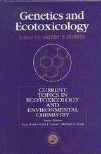Papers in the Biological Sciences

Valery Forbes Publications
Document Type
Article
Date of this Version
1997
Abstract
Particle mixing by the polychaete Capitella sp. 1 was investigated in a 22 d microcosm experiment in the presence and absence of the sediment-bound polycyclic aromatic hydrocarbon (PAH) fluoranthene. Mixing by Capitella sp. 1 (30000 ind. m–2) was examined using glass bead tracers (diam. = 30 to 100 μm) with and without a pulse introduction of fluoranthene to the sediment surface. Worms had a profound effect on the sediment appearance and reworked sediment in a conveyor-belt fashion. The predominant mode of mixing was bioadvective, and the worms created a subsurface maximum in the glass bead tracer profiles. Glass bead subduction rates were 0.37 and 0.30 mm d–1 in uncontaminated and contaminated sediments, respectively. The reduced subduction rate (19%,) was a significant effect of fluoranthene (~10 ppm, uppermost 3 mm), indicating that this parameter is quite sensitive to pollutant stress. The fate of particle-bound fluoranthene was also examined in sediments in the presence and absence of worms. More than half (63%) of the fluoranthene was lost from worm-inhabited sediments, twice that lost from worm-free treatments. The strikingly different depth profiles of the glass-bead tracer particles versus the particle-bound fluoranthene at the end of the experiment demonstrated that macrofauna can readily decouple the fate of mineral grains and refractory organic contaminants such as fluoranthene. This decoupling was shown to occur over very short time (days to weeks) and spatial (mm to cm) scales in the presence of worms. Contaminants may be recycled to the sediment surface by conveyor-belt feeding, and a reduced subduction rate will reduce the downward transport, keeping the contaminants nearer the sediment surface, leading to greater diffusional loss, continued recycling through deposit-feeder guts, and increased probability of resuspension. The net effect of these processes will likely result in increased degradation rates and greater bioavailability than would otherwise be the case. This investigation demonstrates that sediments do not always act as a sink and that infaunal feeding behavior can be a very important factor controlling the ultimate fate of organic contaminants.


Comments
Published in MARINE ECOLOGY PROGRESS SERIES 147 (February 27, 1997), pp. 129-142. Copyright 1997 Inter-Research. Used by permission.